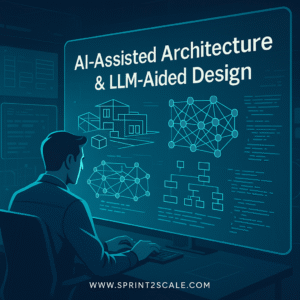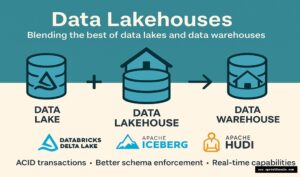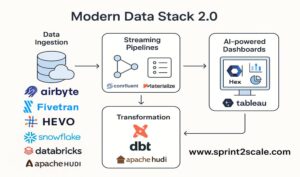In the dynamic landscape of Data Engineering, where the volume and complexity of data continue to grow, machine learning (ML) is emerging as a transformative force. Traditionally confined to data science and analytics, ML is now finding extended use within the realm of data engineering. This integration is reshaping how data is processed, cleansed, and enriched, ushering in a new era of efficiency and automation in the data engineering pipeline.
- Embedding ML in ETL Processes:
- Automated Data Transformation: Machine learning algorithms are being increasingly embedded into Extract, Transform, Load (ETL) processes, marking a departure from traditional rule-based transformations. ML facilitates automated data transformation, allowing systems to learn from patterns and anomalies in the data, leading to more accurate and adaptive transformations.
- Data Cleansing and Quality Improvement: ML is proving instrumental in automating data cleansing tasks. Algorithms can identify and rectify inconsistencies, missing values, and outliers, enhancing data quality. The iterative nature of ML ensures continuous improvement in data cleansing processes, adapting to evolving data patterns over time.
- Operationalizing Machine Learning Models:
- Scalable Model Deployment: Data engineering teams are adopting ML frameworks to deploy and operationalize machine learning models at scale. This facilitates seamless integration of predictive analytics into data pipelines, enabling real-time decision-making based on insights derived from ML models.
- Model Monitoring and Maintenance: The extended use of ML in data engineering includes ongoing model monitoring and maintenance. Automated monitoring systems track the performance of ML models, detecting deviations and triggering alerts when necessary. This proactive approach ensures that ML models remain accurate and relevant over time.
- Enhancing Real-time Data Integration:
- Adaptive Streaming Analytics: Machine learning contributes to real-time data integration by enabling adaptive streaming analytics. ML algorithms can analyze incoming data streams, identify patterns, and make real-time decisions on data processing and routing, allowing organizations to respond swiftly to changing conditions.
- Dynamic Data Pipelines: ML-driven dynamic data pipelines are becoming a cornerstone of modern data engineering. These pipelines can adjust their behavior based on incoming data characteristics, optimizing resource utilization and reducing latency in data processing
- Challenges and Considerations:
- Data Quality and Bias: Despite its benefits, the extended use of ML in data engineering comes with challenges. Ensuring data quality remains a crucial consideration, as ML models are only as good as the data they are trained on. Additionally, addressing biases in training data is essential to prevent biased outcomes in ML-driven processes.
- Skillset and Training: Integrating ML into data engineering requires a cross-disciplinary skill set. Data engineers need to acquire expertise in ML concepts, and collaboration with data scientists is often essential. Continuous training and upskilling become imperative in this evolving landscape.
- Embedding ML in ETL Processes:
Conclusion:
The extended use of machine learning in data engineering signifies a paradigm shift, where automation, adaptability, and intelligence converge to redefine how organizations harness the power of their data. As data engineering teams embrace ML-driven approaches, they position themselves to navigate the complexities of modern data landscapes and unlock unprecedented insights, efficiency, and agility in their data-driven endeavors.







No Comment! Be the first one.